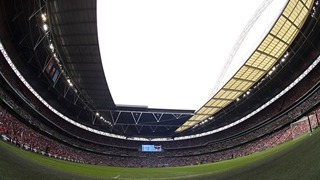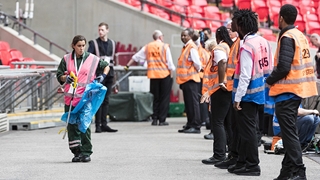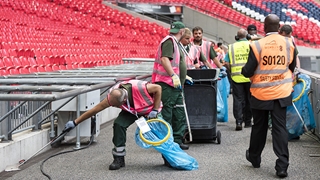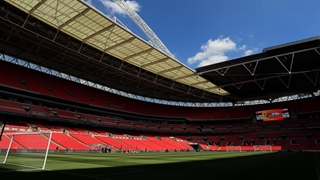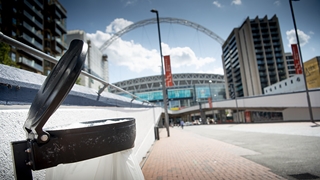
Anyone who has surveyed the scene after a festival has left town can attest to how much work goes into clearing up after large gatherings of people.
This year’s FA Community Shield saw just shy of 77,565 people cram into the national stadium.
Over the course of the day, a grand total of 18,263 meals and hot food items were sold, including over 3000 hotdogs and 1193 portions of chips with curry sauce. To wash this down, matchgoers bought a total of 135,247 drinks, nearly two each.
Each one of these items comes with packaging in some form or another – that’s a lot of waste to shift, so we thought we’d show you how we deal with it, where it goes, and how we can keep the environmental impact of these events to a minimum.
All those hot dogs and drinks containers translated into nearly 30 tonnes of waste – but where does the waste go when it leaves the stadium? You’ll notice that we don’t have separate recycling bins in the venue. This is because it’s filtered into three kinds of waste, inside the stadium, before being shipped off to the relevant plants for processing.
Just as at home, we separate waste into food, recyclable, and general waste. Our recycling is taken to the Veolia recycling plant in Southwark. Once there, an industrial process separates it into plastics, metals, cardboard, etc. Metals are removed using magnets, plastics detected using infrared, are then blown off the conveyor by air jets, and aluminium is repelled using a magnetic field.
Our food waste is taken to an anaerobic digestion plant, where it’s turned into biogas (which can be used as vehicle fuel or introduced back to the National Grid) and a renewable fertiliser for agriculture.
Everything else is classified as general waste, and taken to the Southeast London Combined Heat and Power (SELCHP) facility in Bermondsey – a familiar sight to Millwall fans taking the train to the Den, sitting as it does next to the train line between London Bridge and South Bermondsey – where it is then burned to generate power and heat for the local community. This facility generates power and heat for up to 48,000 homes, and the remaining ash is then used to help build roads, meaning absolutely nothing goes to landfill.
Overall, 65 per cent of waste from Wembley Stadium is recycled, and we’re working hard every day to increase that figure, whether it’s from traditional recycling, or encouraging re-use of materials.
A good example of this is the flags clubs produce for fans on match days. We encourage clubs to produce something memorable that fans will want to keep as a memento, rather than something more generic, which they may throw away as soon as the final whistle blows.
As well as this, we want them to make them out of re-useable or recyclable materials – England flags provided at home games now have poles made of cardboard, and the flag itself is made out of fabric, which can then be reused.
In the last ten years, the amount we’re able to recycle has improved vastly, but we’re still looking to improve, and we’re looking to increase that to 70 per cent.


